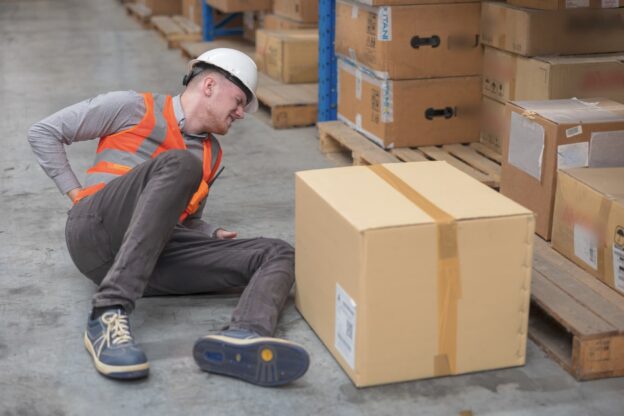Slip and fall cases may seem simple enough on the surface, but these are often complex matters that are difficult to pursue and prove without the help of an experienced slip and fall lawyer. These types of cases become even more challenging when comparative negligence plays a part in the accident.
Here is an overview of what comparative negligence is and how it can affect your slip and fall case in New York.
Basics of a Slip and Fall Case
Slip and fall cases are among the most common personal injury claims and ones that result after a person slips, falls, or trips on another person’s property. These cases can be pursued if another property owner was at fault for your fall that resulted in an injury. Slip and fall accidents can occur essentially anywhere, including private residences, commercial buildings, and government property. They are often the result of unsafe hazards that exist, such as broken stairs, icy sidewalks, and missing handrails.
How to Prove Fault in a Slip and Fall Case
It is important to prove the fault of another party to effectively pursue your slip and fall case, which can be surprisingly difficult in our legal system. With substantial evidence, you should be able to prove that a property owner created dangerous conditions or allowed them to happen to lead to your fall, that the owner knew about the conditions and did not fix them, and that the conditions caused your fall that made you become injured.
What Is Comparative Negligence?
Comparative negligence is also sometimes called comparative fault and comes into play when a plaintiff may be partially or even mostly responsible for a slip and fall accident. It is a legal concept established for allocating damages when two or more parties were at least somewhat each at fault.
Here is an example to demonstrate comparative fault: a New York plaintiff is found by a jury to be 20 percent at fault for an accident and the defendant to be 80 percent at fault. The jury determines that the total damages are $100,000. Therefore, the plaintiff will recover 80 percent ($80,000) for this case because the 20 percent of fault assigned to the plaintiff is subtracted from the total recovery.
Types of Comparative Negligence
Depending on the state you live in, comparative negligence can affect your case in different ways. New York is one of the states that has a pure comparative fault rule for personal injury cases. With pure comparative fault, the amount that you are able to recover from a claim can be reduced by how much you were personally at fault for the accident.
A small handful of other states have laws that are more stringent and do not allow a plaintiff to recover any damages at all if the plaintiff is found to be even a tiny bit at fault for the accident. Meanwhile, in some other states, you may not be able to recover anything from a claim if you are found to be 51 percent or more at fault for the accident. Those other states are classified as modified comparative fault rule states.
This distinction makes New York law particularly favorable to plaintiffs who have slip and fall accidents and a good reason to pursue your slip and fall case here in Brooklyn even if you can’t place full blame on someone else.
How Comparative Negligence Can Affect Your Slip and Fall Case
Comparative negligence can impact your recovery after a slip and fall accident if a property owner claims that you were the cause of your own injuries. In a jury trial in New York, jurors will determine the percentage of fault for each party, calculate the total amount of damages, and then subtract the plaintiff’s percentage of fault from that total amount to arrive at the final award amount.
If you have been involved in a slip and fall case that may involve comparative negligence, the Law Office of Jeffrey K. Kestenbaum can help. We handle personal injury cases in Brooklyn and will fight for every dollar possible to get you the fair compensation you deserve. Even if you were somewhat at fault for your own injuries, you can still receive a settlement to help pay for your medical bills and other accident-related expenses under New York law.
Contact us online or give us a call at 718-237-5586 for guidance with your comparative negligence case.







